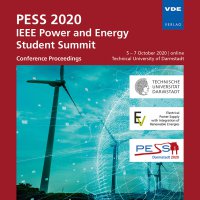Approaches to the 6-10 kV cable line parameters definition in the context of transient processes’ analysis
Conference: PESS 2020 - IEEE Power and Energy Student Summit
10/05/2020 - 10/07/2020 at online
Proceedings: PESS 2020
Pages: 4Language: englishTyp: PDF
Authors:
Kutumov, Yuri D.; Shadrikova, Tatiana Y.; Shuin, Vladimir A. (Ivanovo State Power Engineering University, Russia)
Abstract:
The complexity of transient processes during single phase to earth faults in 6-10 kV cable networks is responsible for the necessity of cable line parameters’ accurate records in course of transient overvoltage rate evaluation, single phase to earth fault protection, fault location and full earth fault current compensation devices development. Different researches, which are addressing an issue of cable line parameters definition, can be based on the usage of parameters from reference books, which are commonly defined at the frequency of 50 Hz or even do not take into account inductive and resistive cable parameters. However, cable line inductance and resistance is known to exert a significant impact on the transient processes parameters during single phase to earth faults (e. g., capacitive discharge current, charging current, transient overvoltage and its derivative). For this reason a problem of rationale for choosing of 6-10 kV cable line parameters is currently important. The main method of transient processes’ research in this paper is simulation study in modern software systems, such as PSCAD. For example, PSCAD software allows to create different types of 6-10 kV cable models, which can be essential in the process of development of cable line parameters’ calculation methodology. In the consequence of this work, the methodology of 6-10 kV cable line parameters definition was represented; each approach to the line parameters definition was evaluated and qualitative characteristics of transient processes’ parameters in 6-10 kV cable networks were given.


